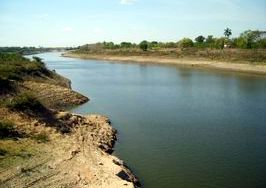 Without making noise, drought has settled in Sancti Spiritus, a Cuban central province. Evidences show decline in the historical records of rainfall and contraction in the availability of water in reservoirs.
Without making noise, drought has settled in Sancti Spiritus, a Cuban central province. Evidences show decline in the historical records of rainfall and contraction in the availability of water in reservoirs.
According to reports from the Provincial Water Resources, the territory’s reservoirs currently count on about 145 million cubic meters less than in the similar period of the previous year, which means that they accumulate only the 31% of their total capacity.
According to information supplied to Radio Sancti Spiritus by Rafael Angel Rangel, deputy representative of Water Resources in Sancti Spiritus, Zaza dam, the largest in Cuba, remains in an alarming situation, with a deficit of 130 million, with only the 27% of its storage capacity,
Although reservoirs supplying directly residents in the territory present a more favorable situation by exceeding the 60% of its storage possibilities, like in the case of Tuinucu, Siguaney and Lebrige, the waste cannot be encouraged because not all the supply is based on these dams.
The great majority of residents depend on groundwater from wells with pumping substations; hence all the calls to save are necessary.
In fact, the situation is particularly difficult at present because 38 sources of these groundwater basins are partially or totally destroyed.
Sancti Spiritus Water Resources reports about 33 settlements that depend on water pipe with the most pressing problems in the municipalities of Trinidad, Sancti Spiritus and Cabaiguan, although in one way or another affectations reach all points of the Cuban central province, where some 35 000 people are affected by drought.
A lot of measures have being taken to continue to take care of the precious liquid, from consolidating a “saving culture” where people and institutions learn of their water needs, to an investment program that allows facing difficulties of objective nature.
 Escambray ENGLISH EDITION
Escambray ENGLISH EDITION





Escambray reserves the right to publish comments.